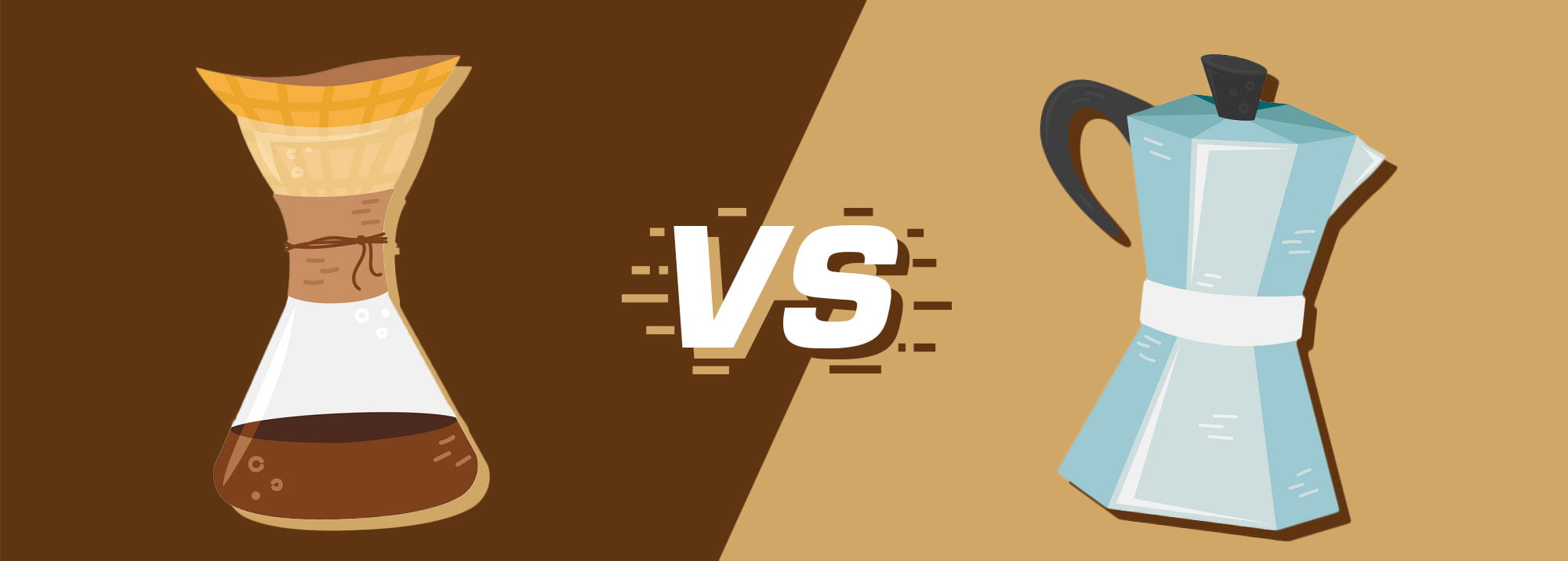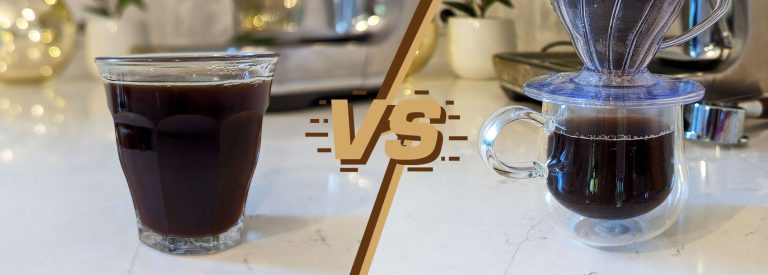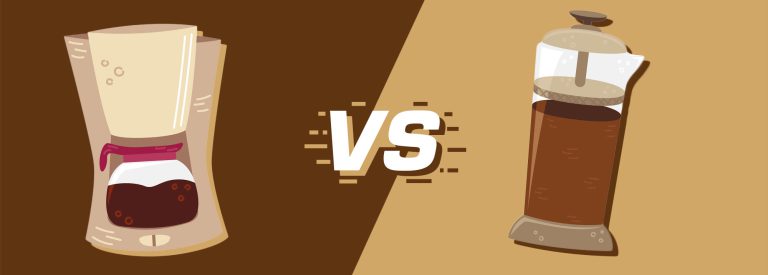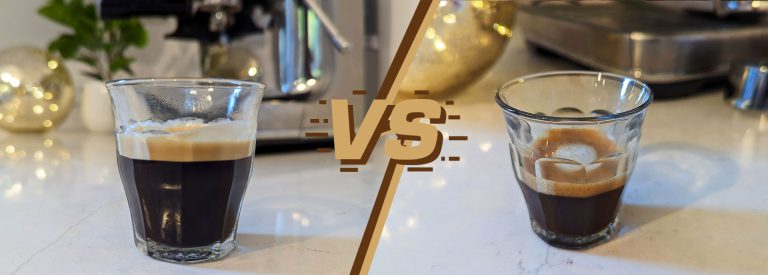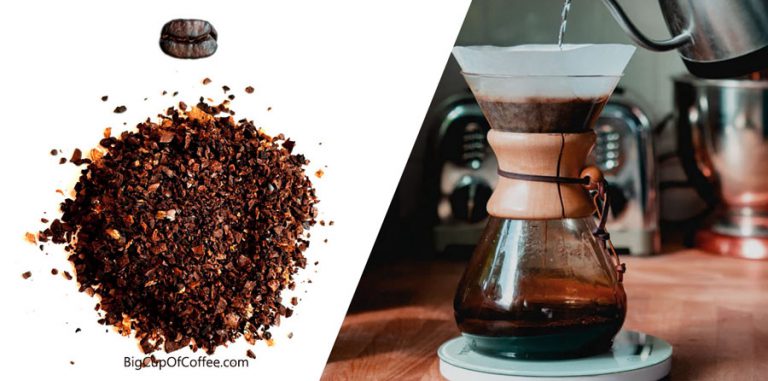Moka Pot vs Chemex – Which Brewer Has Stood the Test of Time
Both the Moka pot and Chemex have been around for decades, having been invented during the early 1900s. With such a long time of existence and established popularity, I can’t help but wonder: which one is better in the 21st century?
In this article, I’ll be delving deep into both methods, comparing their features and benefits to find out which brewer really is better for whom.
After reading through, you should be able to decide on which brewing method is best suited for your taste and lifestyle.
Comparing Moka Pot & Chemex
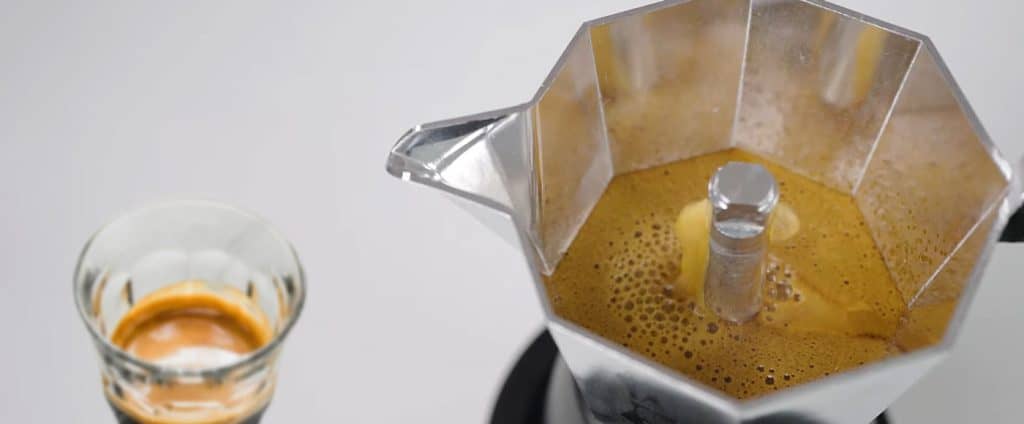

The Moka Pot is a stovetop coffee maker that produces strong and rich coffee similar to espresso (the Moka pot can even have an espresso-like crema). Its brewing process (as described here) begins by filling the bottom chamber with water, and the middle basket with finely ground coffee. Screw the top on, and put it on a suitable stovetop at low-medium heat. The steam pressure generated from the pot pushes hot water through the grounds in the coffee basket and into the top chamber where it collects as your final brew.
On the other hand, Chemex involves using a manual pour-over technique to produce a refreshing cup of drip coffee with clean and bright flavors. This elegant-looking brewer is made out of a single piece of borosilicate glass and a wooden collar. As you slowly pour water over the coffee grounds sitting on the top half of the device, brewed coffee drips down the carafe at its base.
Here are the factors to consider when picking between the two brewing methods, followed by a detailed comparison of each feature.
| Features | Moka Pot | Chemex |
|---|---|---|
| Taste & Flavor | Rich, full-bodied, espresso-like | Clean, light-bodied, hint of sweetness |
| Strength | Concentrated, robust brew | Adjustable strength based on water-to-coffee ratio and roast level |
| Ease of Use | Fairly easy to use, fewer variables | Requires practice for pouring technique and timing |
| Brewing Speed | Takes at least 10 minutes | Takes around 5-7 minutes |
| Versatility | Limited customization options | Offers control over the extraction process |
| Durability & Portability | Durable, portable | Fragile, not recommended for travel |
| Sustainability | Uses less electricity, no plastic parts | Eco-friendly materials, compostable paper filters |
| Cost | Price ranges from $15 to $70 | Price ranges from $40 to $60, with recurring costs for paper filters |
Taste, Flavor, & Strength
Let’s start with the showdown flavor-wise.
The Moka pot produces a rich and full-bodied aromatic coffee that’s quite similar in taste to your favorite espresso (minus the crema). With its concentrated and robust brew, you get a punch of caffeine with every sip.
Meanwhile, the Chemex offers a cleaner and lighter body with a hint of sweetness in each cup. The beauty of this brewing method is in how much control you have over the strength of your coffee. By adjusting the water-to-coffee ratio or choosing different roast levels for your beans, you can achieve anything from medium-strength intensity to something more potent.
If you asked me which I would choose, I literally could not decide. Sometimes I tend to lean toward the Chemex when I prefer milder coffee, but there are also occasions when I crave that powerful jolt you can only get from a Moka pot brew. You can even make espresso and milk drinks with it, since it is so similar to espresso.
Ease of Use
When it comes to brewing coffee, ease of use is definitely an important factor to consider. So, which method is easier to brew coffee with?
Let’s start with the Moka Pot which is fairly easy to use once you get the hang of it. To brew coffee using this method, you’ll need a medium-fine grind size and water at around 212°F (100°C) temperature. The good news is there’s no filter needed since it uses a built-in metal filter basket.
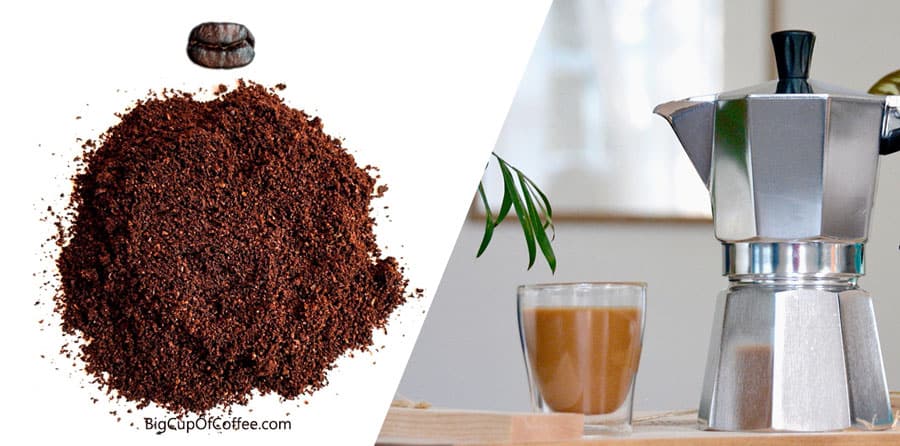
The Chemex is not particularly difficult to use, but getting the timings right and mastering the pouring technique requires a bit of practice for beginners. It’s best used with a gooseneck kettle for that proper pouring technique, and you’ll need a medium-coarse ground coffee on your choice of filter (paper, metal, or cloth) and some hot water at 200°F temperature.

So based on the fewer variables required to make coffee, I’d say that Moka pot takes the prize for ease of use. You have less room for error since most of its factors are predetermined by the brewing method itself.
Brewing Speed
Now onto the brewing speed, the Moka Pot has a total prep and brewing time of around 10 minutes from grinding your beans to brewing and cleaning up. The actual brewing time will depend on the size of your pot, but typically takes between 5 to 10 minutes. Keep in mind that cleaning the Moka Pot can be somewhat tricky due to its small filter basket and crevices where coffee oils and grinds tend to get stuck.
In contrast, Chemex is generally faster than the Moka pot. From start to finish, you’ll spend around 5 to 7 minutes with this method- grinding, brewing, and cleaning included. The brewing phase itself lasts approximately 4 to 5 minutes. When washing the glass vessel, you really have to handle it carefully, and it can be finicky to clean the coffee oils from the inside.
If you want to get your caffeine fix as quickly as possible, then the Chemex is the superior choice over the Moka pot. Just remember to clean it carefully and your trusty Chemex will last a long time.
Versatility
Choosing a versatile way of brewing coffee is important for coffee enthusiasts who want to experiment with various recipes and adjust the resulting cup according to their specific taste.
The Moka Pot offers little control, mostly just adjusting the coffee-to-water ratio and grind size. While not as flexible as other brewing methods, this still allows for some customization in your cup of joe.
As for the Chemex, it offers more control over the extraction process. You can tweak the grind size, coffee to water ratio, water temperature, and pouring rate to create the coffee that can suit your palate perfectly.
One area where the Moka Pot shines in terms of versatility though is its wide range of sizes.
- 0.5-cup (40 ml)
- 1-cup (60 ml)
- 2-cup (90 ml)
- 3-cup (130 ml)
- 4-cup (190 ml)
- 6-cup (340 ml)
- 9-cup (540 ml)
- 12-cup (670 ml)
- 18-cup (810 ml)
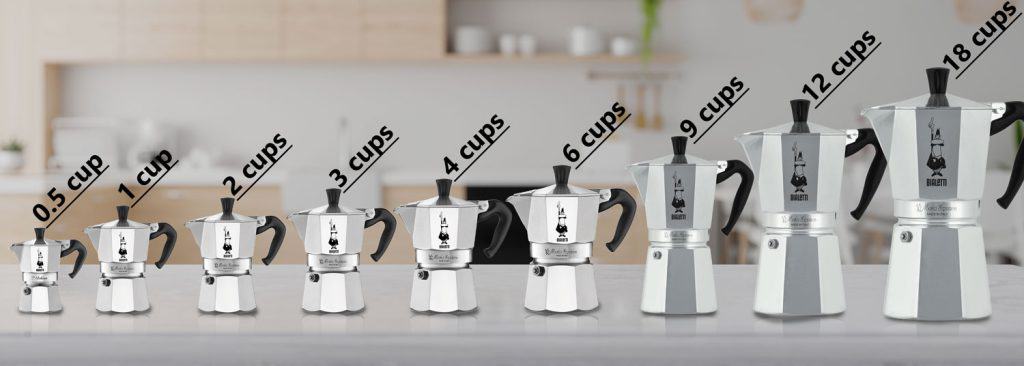
In comparison, while Chemex only has four size options, it still offers a decent degree of flexibility. While not as varied as the Moka Pot, these options still allow for customization based on how much coffee you want to brew at once. An important factor here is that you don’t need to brew Chemex at max capacity, but you cannot half-fill a moka pot.
- 3-cup (16 oz)
- 6-cup (30 oz)
- 8-cup (40 oz)
- 10-cup (50 oz)
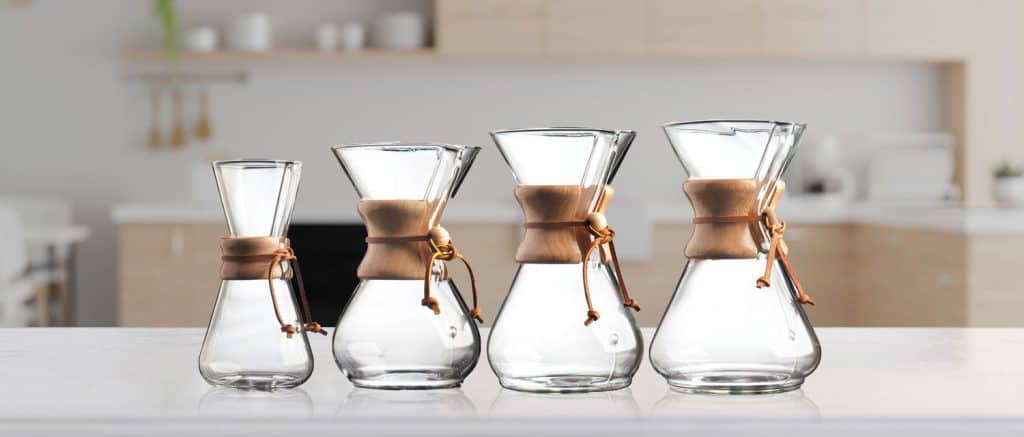
Overall, while the Moka pot offers more capacity flexibility with its wide range of size options, the Chemex is more versatile in terms of control over the brewing process.
Durability and Portability
Another crucial factor in picking a brewer is its durability alongside portability. Moka Pots are generally made of either aluminum or stainless steel, which makes them quite durable. These sturdy materials make for a long-lasting brewing device that can withstand daily use without breaking down. Additionally, they’re compact in size, making them easy to transport from one place to another.
On the other hand, Chemex is made of heat-resistant, shatterproof glass – a feature that adds elegance to its design but makes it fragile at the same time. While it’s not recommended for traveling due to its delicate construction, it still offers an excellent option for home brewers looking for high-quality coffee equipment. Treat it well, and it will last decades. Unfortunately, accidents tend to happen though, so it will probably crack sooner or later.
In short, Moka pot wins over the Chemex in terms of durability and portability. Thanks to its durable build, a Moka pot is easier to handle and carry around without worrying about any issues.
Sustainability
Coffee’s sustainability is important because it directly affects the environment we live in. In this regard, both the Moka pot and Chemex are eco-friendly options.
Metal moka pots have a built-in filter and no plastic parts that can wear out quickly, which means fewer replacement cycles and less waste produced.
The only drawback to Chemex is that it uses thick paper filters (albeit they are compostable), making it more wasteful. You have the option to opt for reusable filters like metal and cloth, but they change the classic Chemex taste.
The Moka pot edges over the Chemex slightly in eco-friendly coffee brewing, just because it doesn’t require single-use filters.
As coffee lovers, we should all make an effort to contribute towards a more sustainable planet. Make your coffee even more sustainable by using shade-grown coffee and recycling used coffee grounds.
Cost
Looking into the prices of both brewers, the Moka Pot comes in a wide range of prices from around $15 up to $70 depending on the brand and style you choose. However, once you invest in one, there are no additional expenses since all parts are reusable.
Meanwhile, Chemex is generally more affordable with a price that ranges from $40 up to about $60 based on where you purchase it and its size. However, recurring costs include paper filters at around $0.16 per piece.

Both brewers offer great value for your money, but if affordability is high on your list of priorities, then investing in a quality Moka Pot would be your best bet here.
Moka Pot and Chemex – Pros & Cons
Now that we’ve gotten a closer look at the features of each brewing method, here’s a quick overview of the pros and cons of the Moka pot and Chemex:
| Brewing Method | Pros | Cons |
|---|---|---|
| Moka Pot | – Small and portable – Easy to use – Produces robust coffee similar to espresso – A wide range of sizes and capacity | – Cleaning is a bit tougher – Limited control once the brewing has started – Can have a bitter taste if the heat is too high |
| Chemex | – A clean and light cup of coffee – Attractive aesthetic – Faster brewing method | – The glass design can be fragile – Requires some learning curve – Needs additional effort for cleaning the inside of the carafe |
Wondering how Moka pot compares to other brewers too? Check out my comparisons below:
You can also read my Chemex comparisons to other brewers such as:
Which Brewer Should You Choose?
Picking a single winner is quite tricky, as each brewing method has its own advantage and drawbacks. The Moka pot is portable, sustainable, and easier to use while the Chemex offers versatility and faster brewing.
Personally, I prefer using Moka Pot over Chemex because I like my coffee strong with a bold flavor profile that comes close to espresso. Oh, wait. I’m just going to make a lighter Chemex brew now 🙂
Since these brewing methods are vastly different, there is no clear winner for me.
So which one do you think is better? Do share your thoughts in the comments below.

